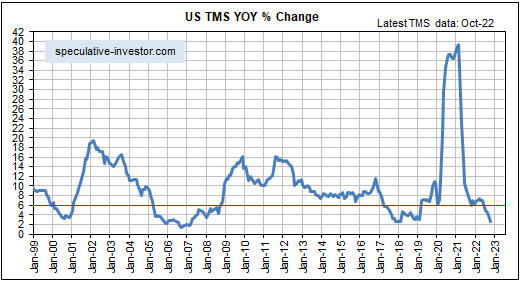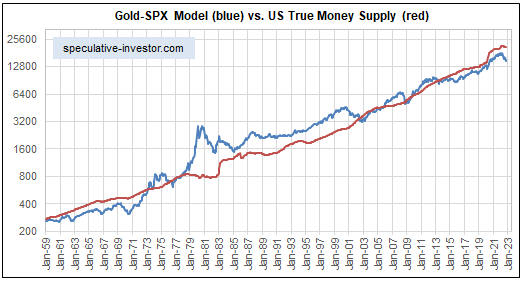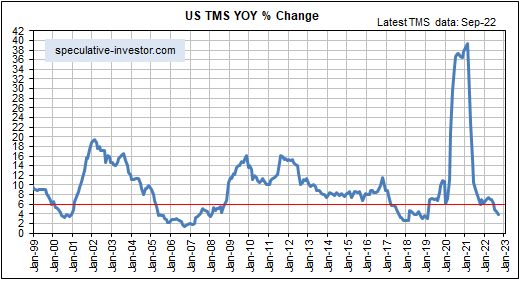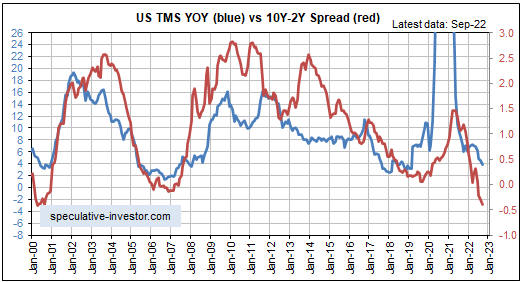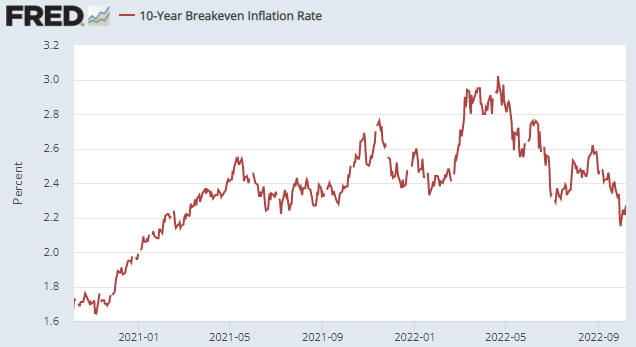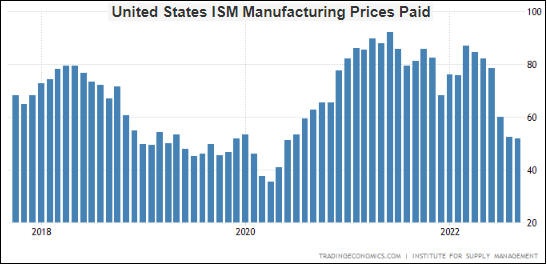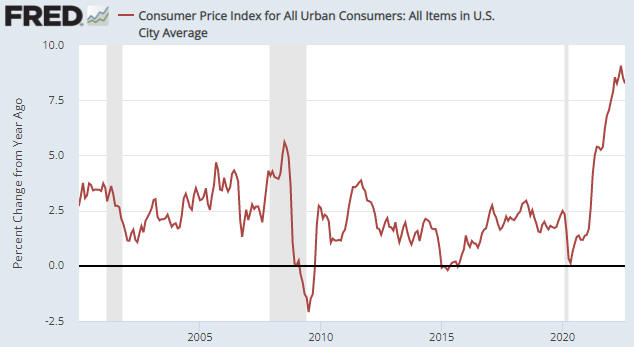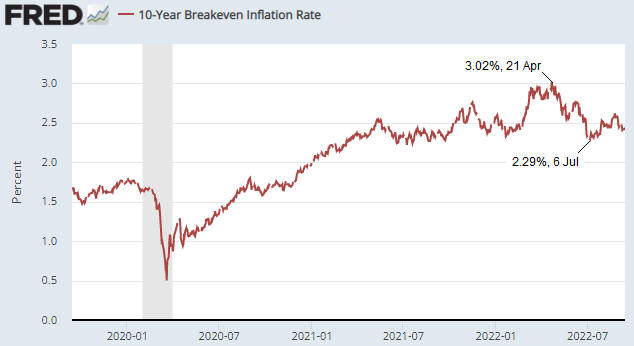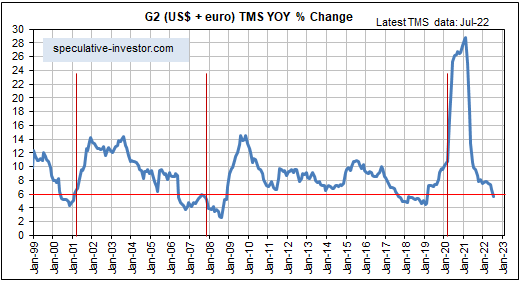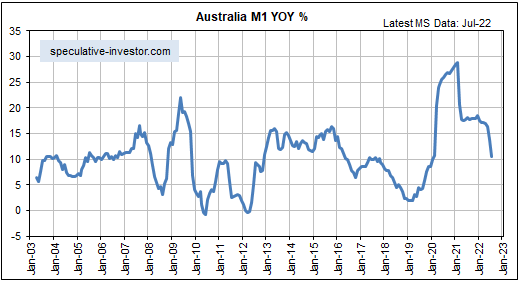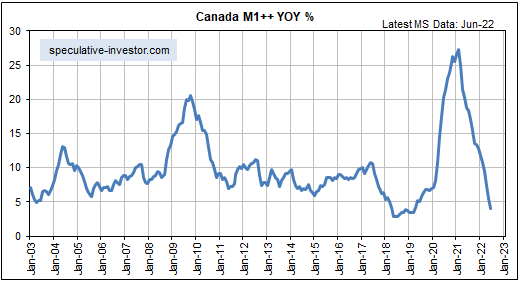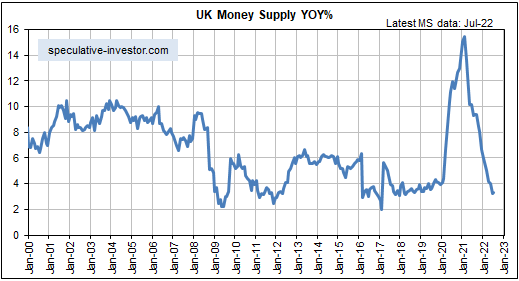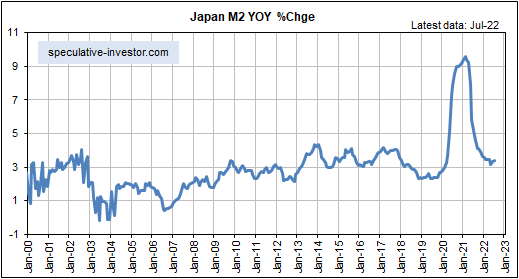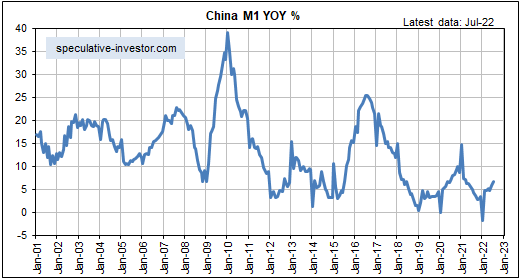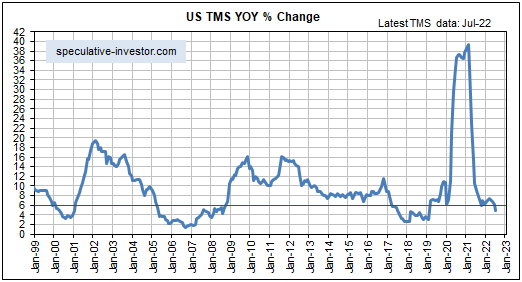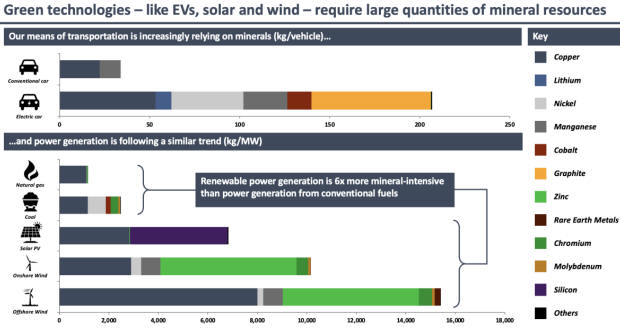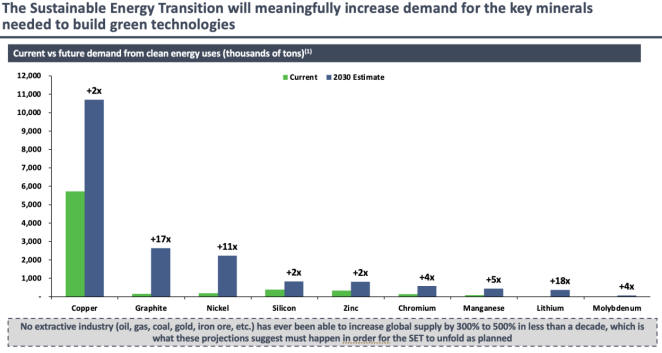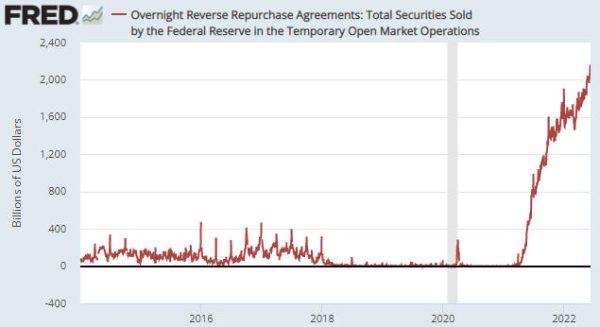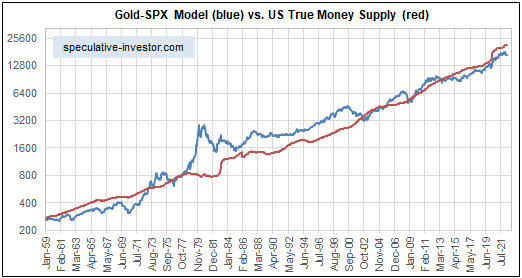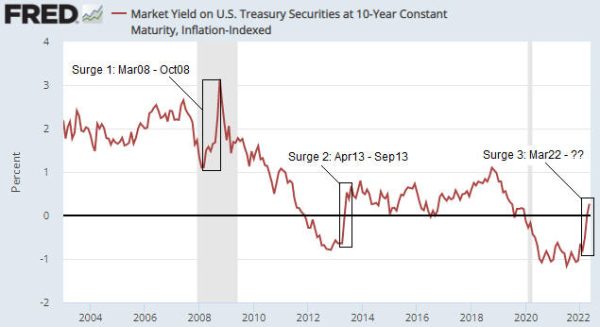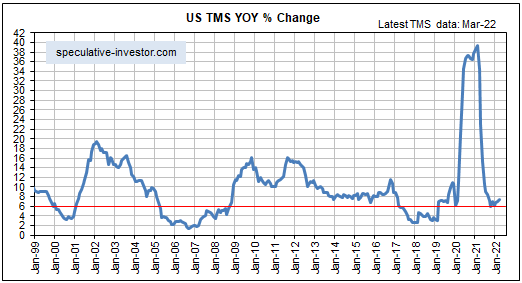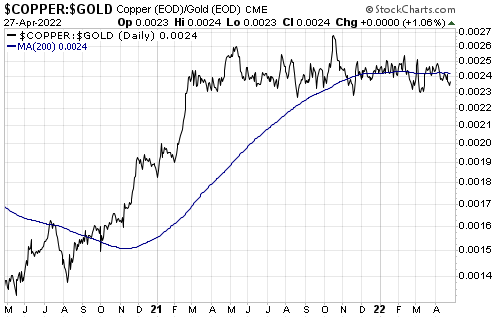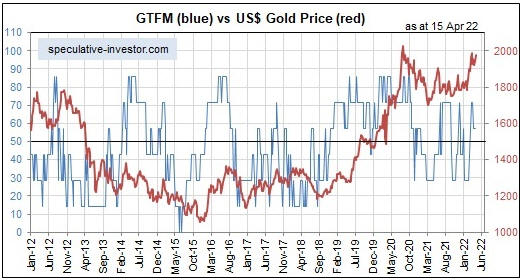[This blog post is an excerpt from a commentary published at TSI on 4th December]
At least one of two things should happen to warn that an official US recession is about to begin. One is a decline in the ISM Manufacturing New Orders Index (NOI) to below 48 and the other is a reversal of the yield curve’s trend from flattening/inverting to steepening. For all intents and purposes the first signal triggered in July-2022 when the NOI dropped to 48, whereas the second signal probably won’t trigger until the first half of next year.
The following monthly chart shows that the NOI dropped to a cycle low of 47.1 in September-2022, ticked up in October and returned to its cycle low in November, leaving the message unchanged. The NOI is signalling that a recession has started or will start soon.
The following chart also shows that the NOI dropped below 40 during the recession period of the early-2000s and dropped below 30 during the 2007-2009 Global Financial Crisis and the 2020 COVID lockdowns. We expect that it will drop below 30 next year.
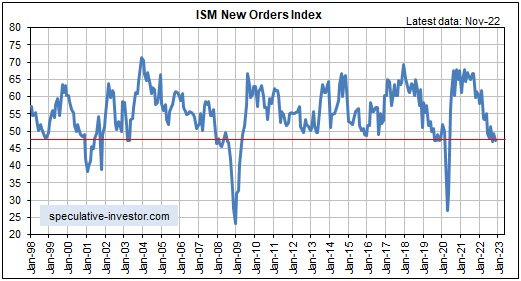
The first of the two daily charts displayed below shows that the 10yr-2yr yield spread, our favourite yield curve indicator, plunged well into negative (inverted) territory during July and remains there. The second chart shows that the 10yr-3mth yield spread, which apparently is the Fed’s favourite yield curve indicator, finally followed suit over the past two months and is now as far into inverted territory as the 10yr-2yr spread.
One of our consistent messages over the past few months has been that a more extreme inversion of the US yield curve would occur before there was a major reversal to steepening. There were two reasons for this. First, the monetary inflation rate (the primary driver of the yield curve) was set to remain in a downward trend until at least early-2023. Second, it was likely that declining inflation expectations would put downward pressure on yields at the long end while the Fed’s rate-hiking campaign supported yields at the short end. For these reasons, we wrote over the past few months that by early 2023 both the 10yr-2yr and 10yr-3mth spreads could be 100 basis points into negative (inverted) territory.
As recently as two months ago our speculation that the 10yr-2yr and 10yr-3mth spreads would become inverted to the tune of 100 basis points (1.00%) by early-2023 looked extreme, especially since the 10yr-3mth spread was still above zero at the time. With both of these spreads now having become inverted by around 80 basis points, that’s no longer the case.
We doubt that the aforementioned yield spreads will move significantly more than 100 basis points into negative territory, because we expect that during the first quarter of next year economic reality (extreme weakness in the economic statistics and the stock market) will hit the Fed like a ton of bricks. This should bring all monetary tightening efforts to an abrupt end, causing interest rates at the short end to start falling faster than interest rates at the long end, that is, causing the yield curve to begin a major steepening trend.
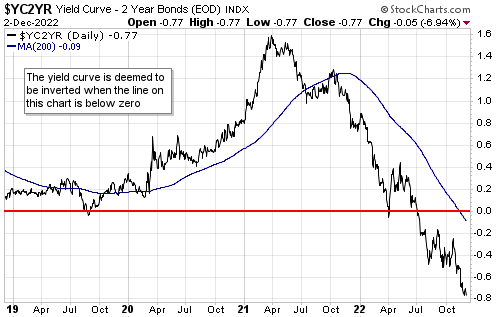
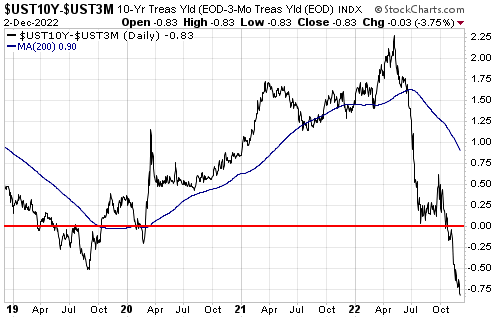
Our conclusion over the past four months has been that the US economy had commenced a recession or would do so in the near future. Due to recent up-ticks in some coincident and lagging economic indicators, we now think that the first quarter of 2023 is the most likely time for the official recession commencement.
 Print This Post
Print This Post

